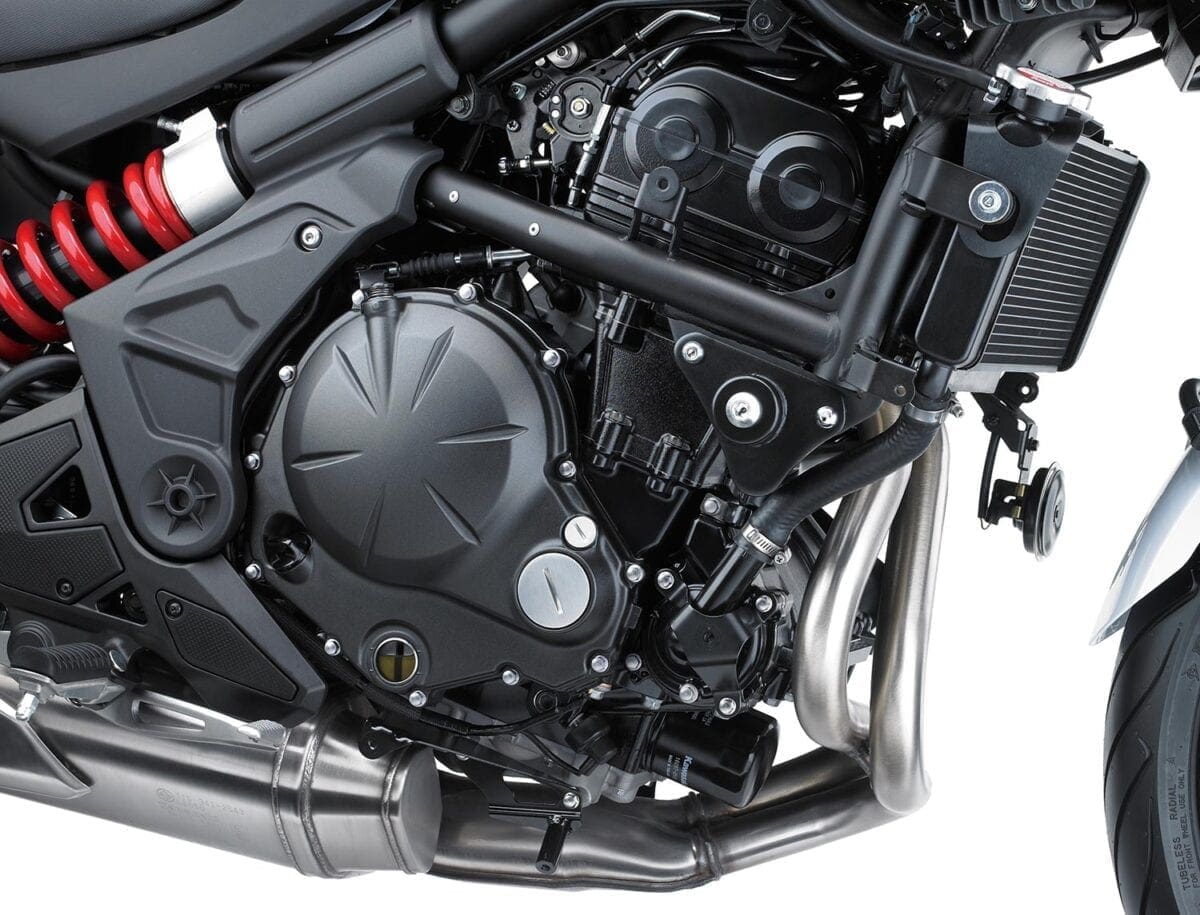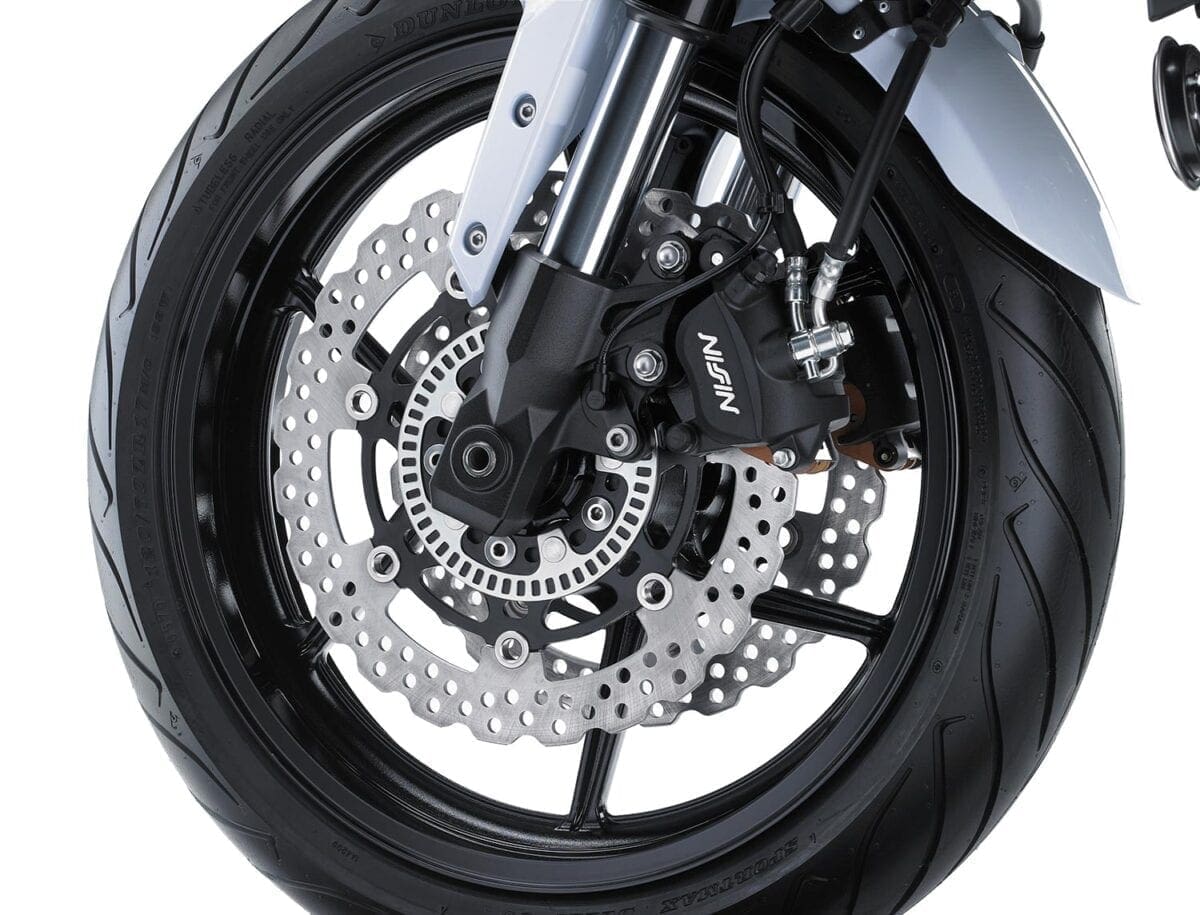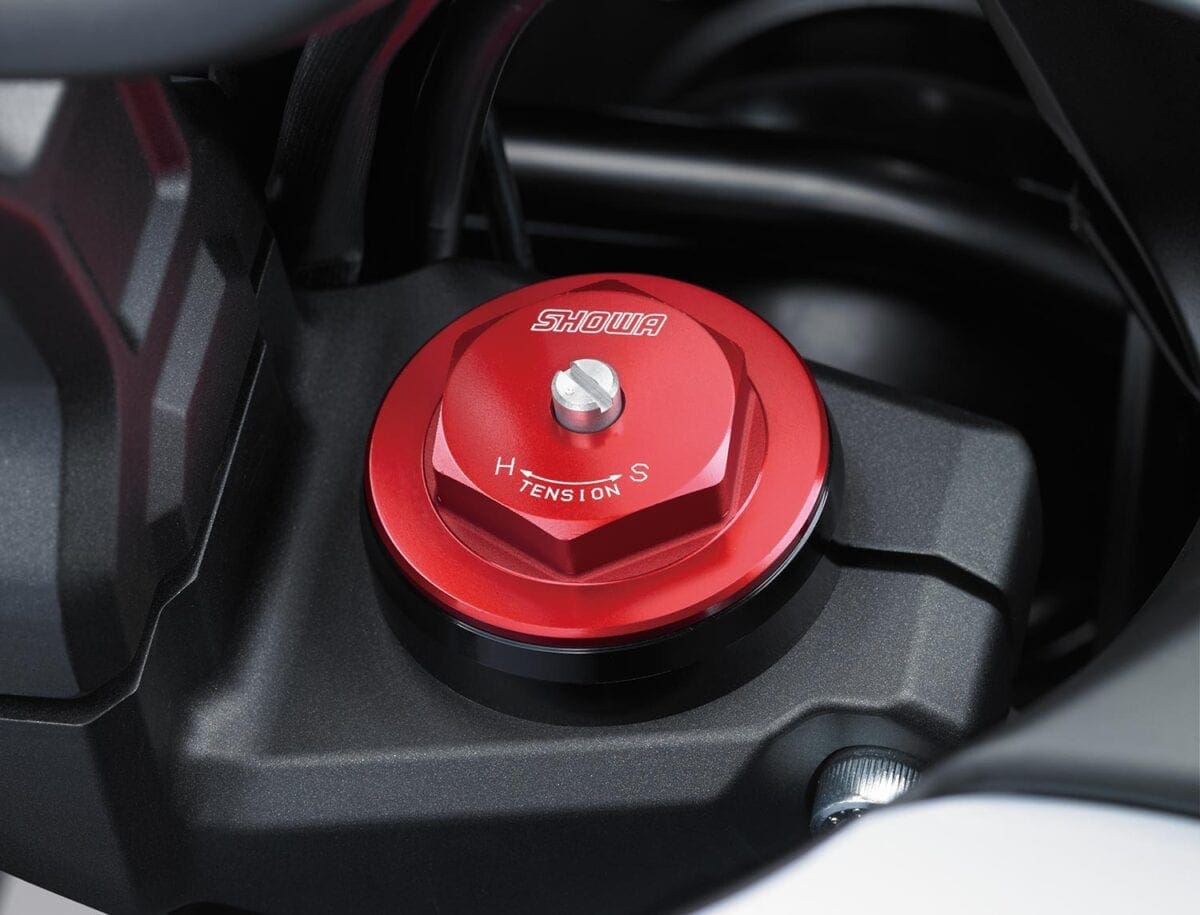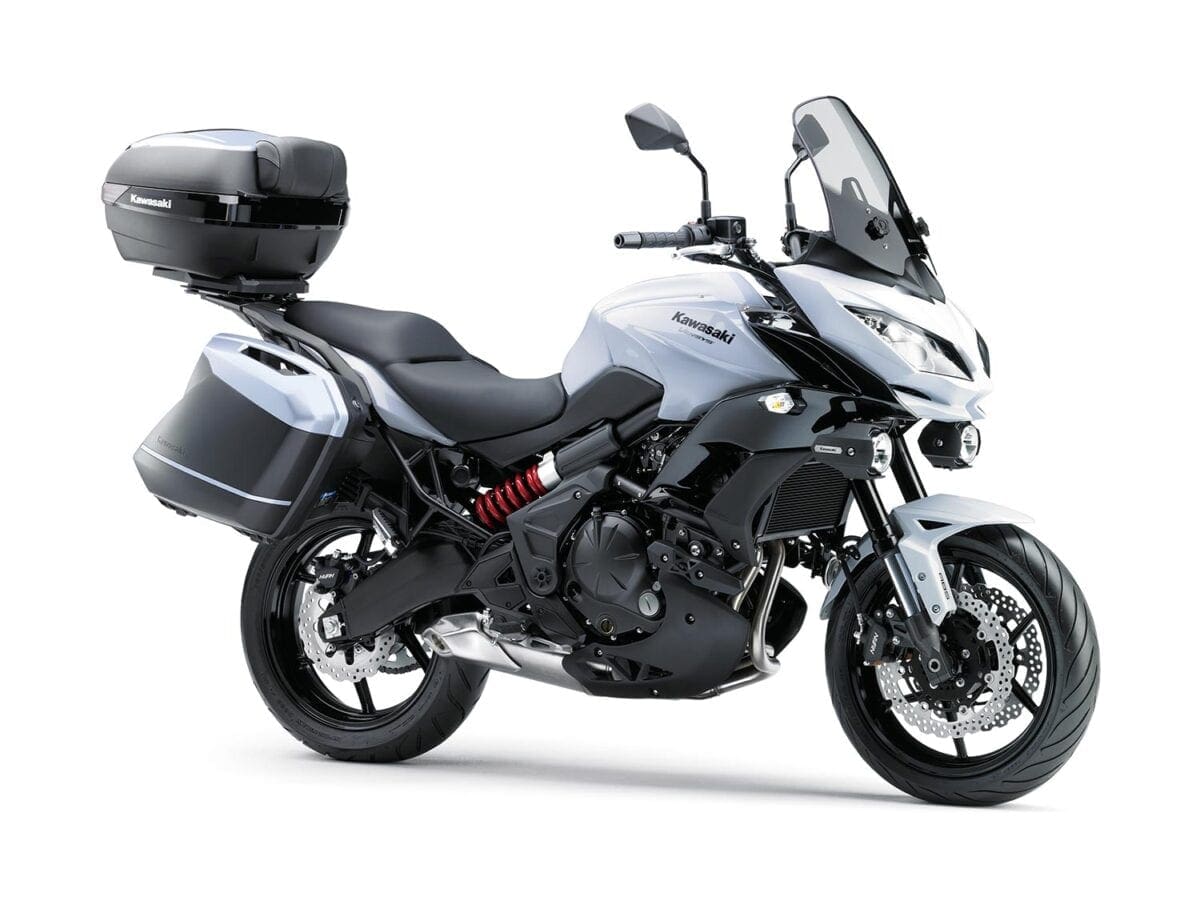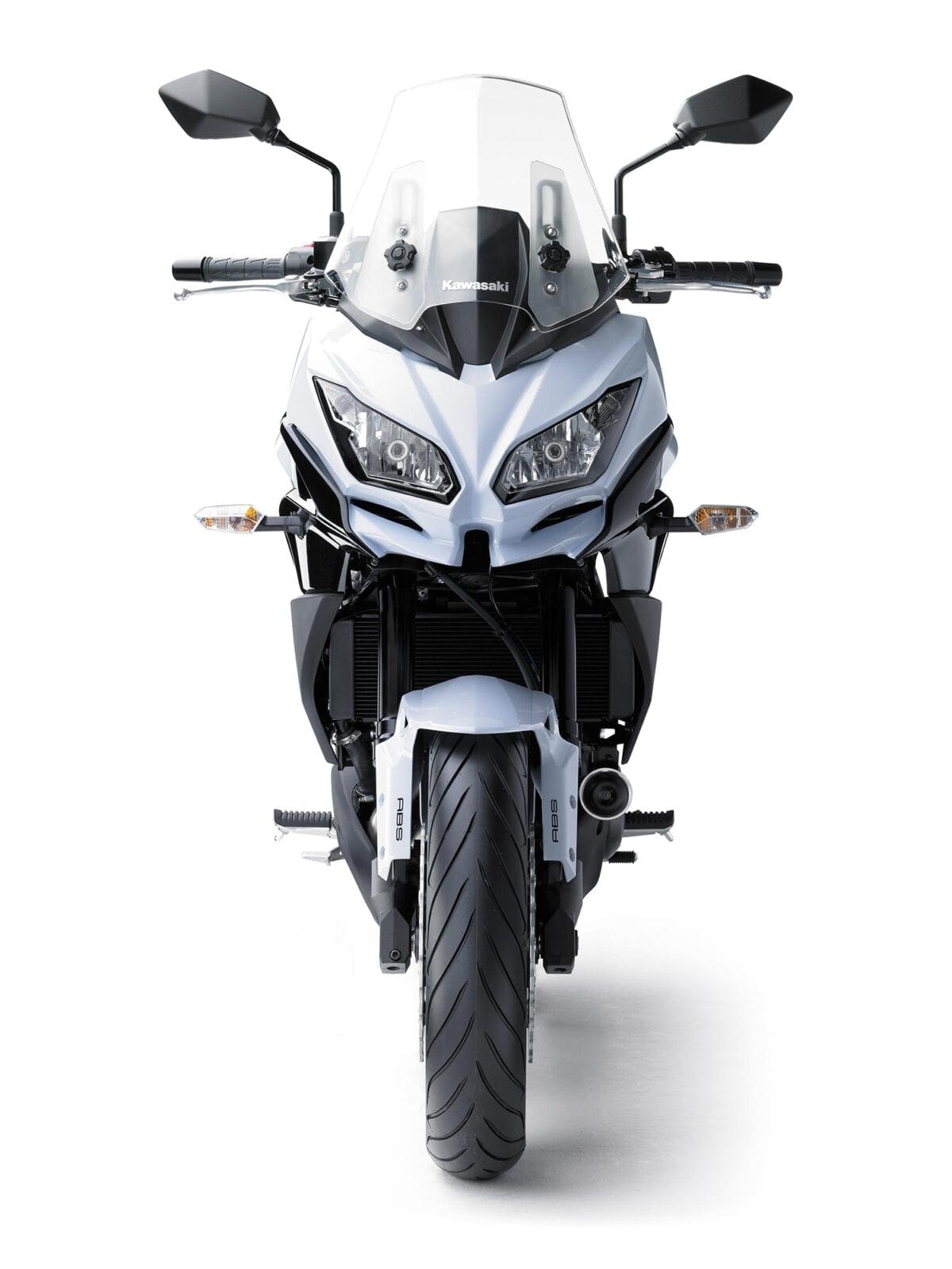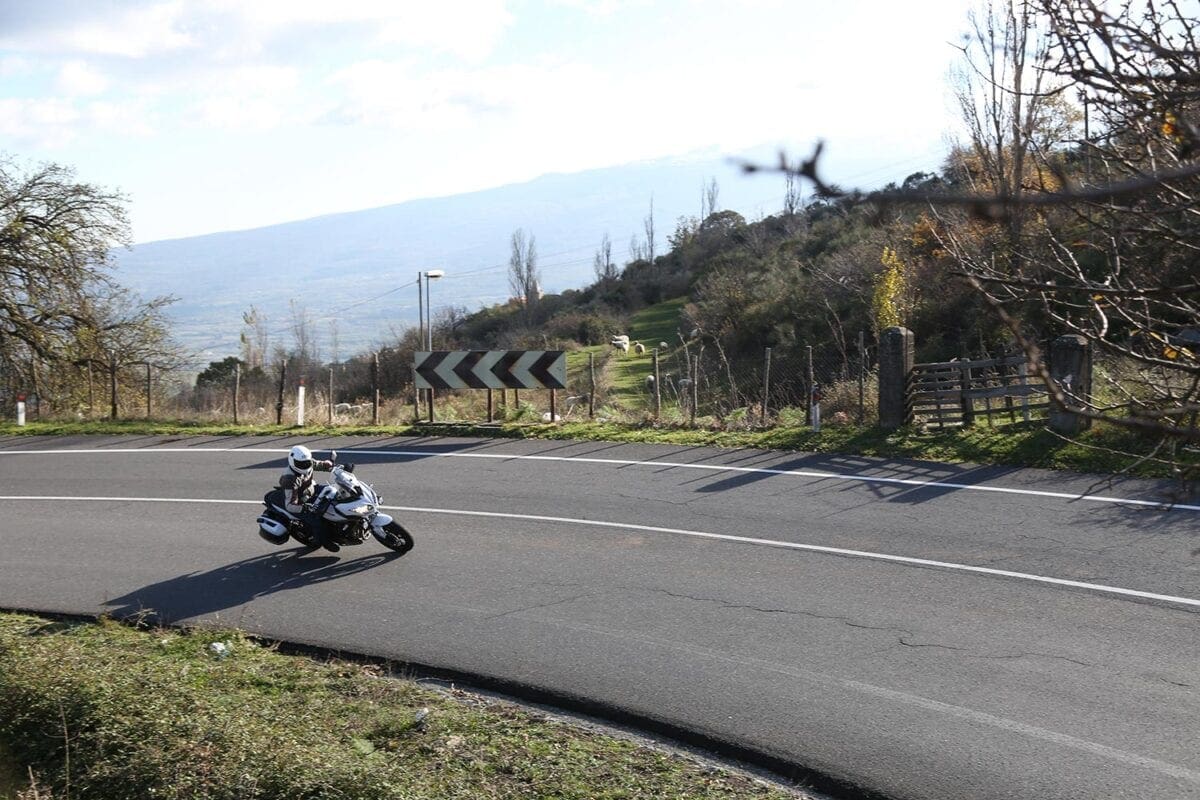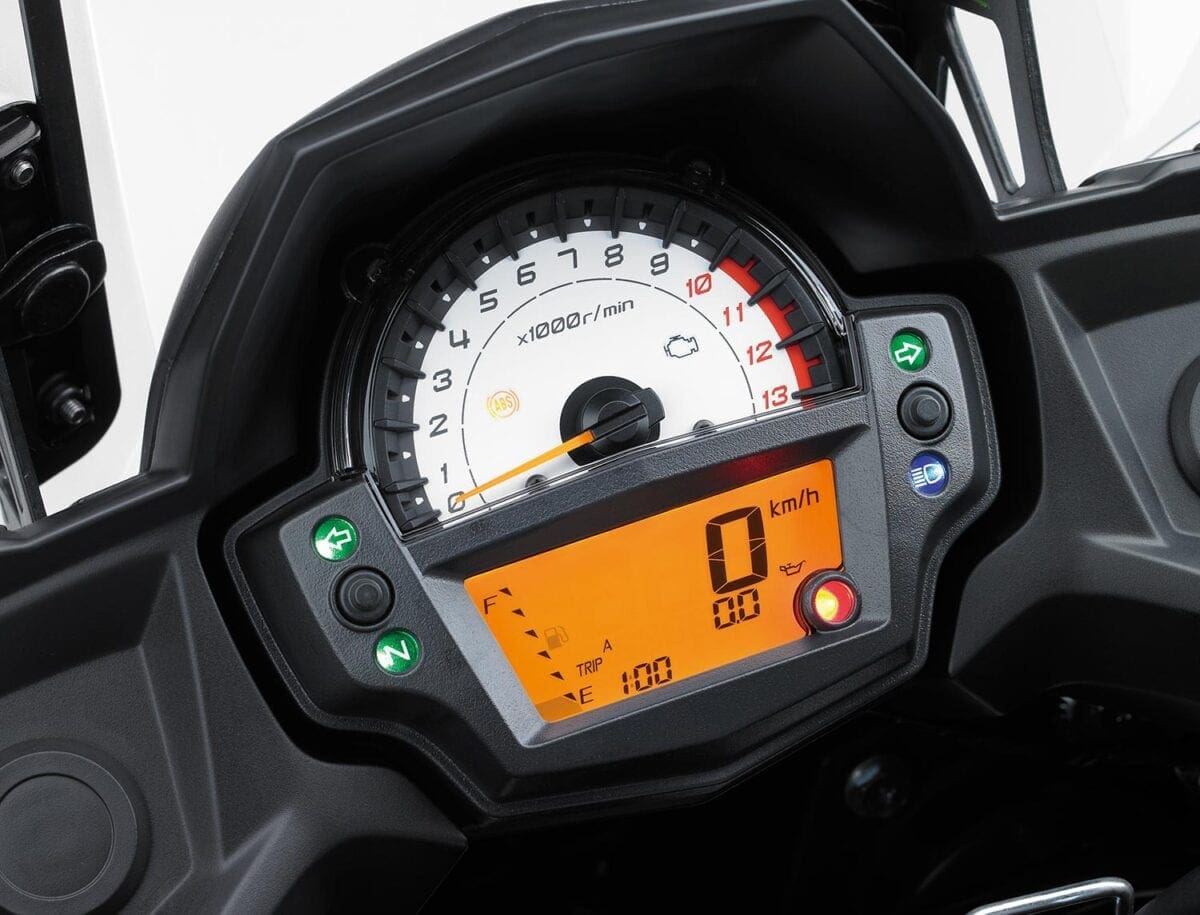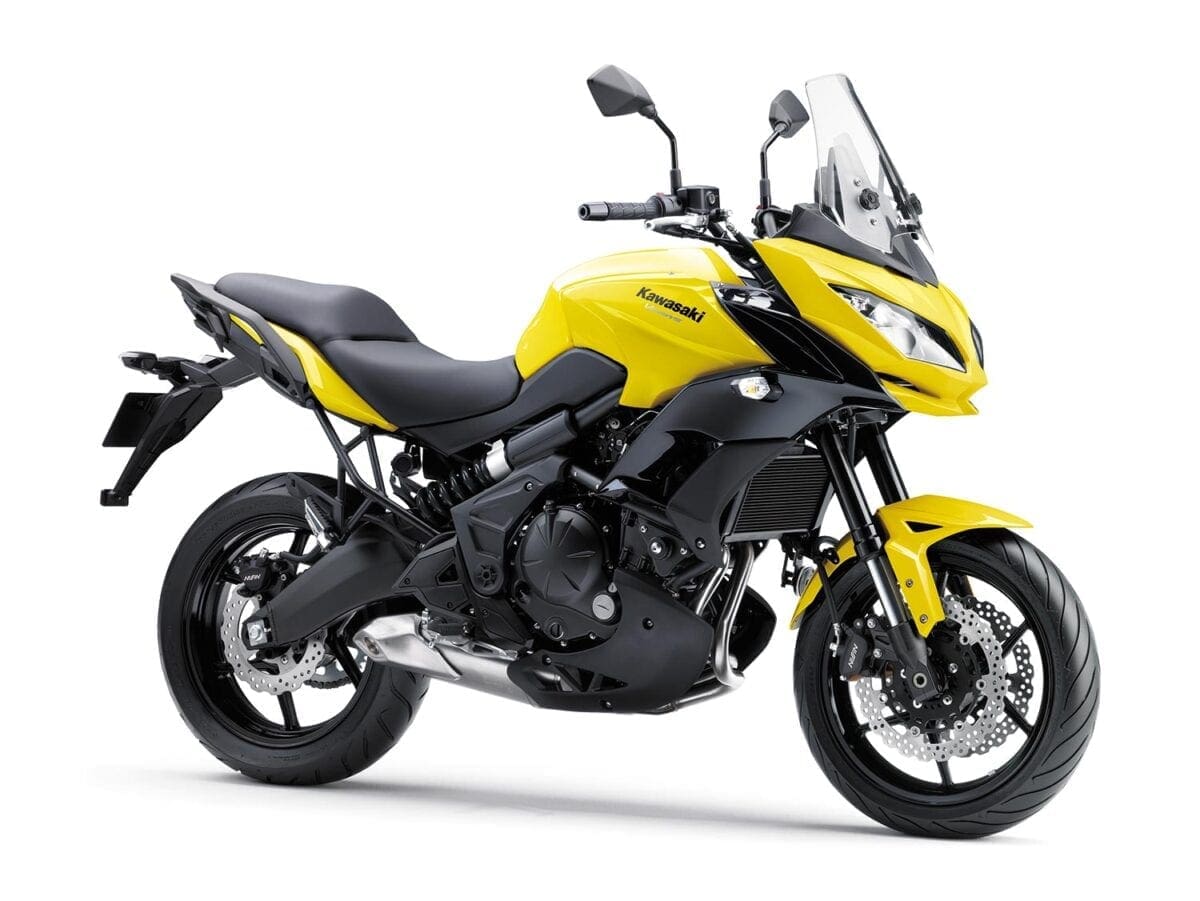2015 Kawasaki Versys 650 review | £6749 | 69bhp@8500rpm | 47lb-ft@7000rpm | 649cc liquid-cooled parallel-twin four-stroke
Tested by: John Milbank
Designed to be more sporty, whilst offering even greater touring potential, 2015’s Versys 650 loses the ‘functional’ styling with a healthy injection of Kawasaki DNA. “All roads. One bike” is the new machine’s tagline, yet the Japanese company is keen to distance itself from the cluttered ‘Adventure Touring’ market.
Three versions of the Versys 650 will be available – the standard model at £6749, the Tourer at £7299 with panniers, liner bags and hand-guards, and the Grand Tourer at £7999 with panniers and top-box (plus liner bags), as well as hand-guards, bright LED driving lights, gear position indicator and a 12V power outlet. The launch bikes were Tourers, fitted with optional heated grips, driving lamps and GPS bracket.
Tell me about the engine
Gaining 5bhp over the previous model, as well as 2lb-ft (at 200rpm higher in the rev range) is impressive given Kawasaki’s claim that the motor is also 2% more economical.
The parallel twin has always been about low- to mid-range performance, and none of that is lost with the new engine, which pulls strongly from 3000 revs, right to the cut-out just above the 10,000 rpm redline. The word ‘easy’ comes to mind – a capable motor that won’t catch you out, can be ridden lazily, and doesn’t demand constant up- and down-changes to perform.
The exhaust has been redesigned, with much of the pipe-work tucked out of sight, leaving a good-looking stubby can ahead of the back wheel. It’s also available as a 35kW (48bhp) restricted version which peaks at 7900rpm, catering for A2 licence holders.
What’s the chassis like?
A tubular high-tensile steel chassis is supported by 41mm Showa upside-down forks, adjustable for rebound damping and preload. These carry twin semi-floating petal-shaped discs, each with two-piston calipers – new Nissins with new pads – pushed by a revised master cylinder. The lever ratio has been tweaked too, now putting more pressure on the master piston.
At the rear is a new KYB shock with an easy to use pre-load adjuster. The 250mm petal rear disk has a single-piston caliper, which is driven by a revised master cylinder.
All UK models will come with Bosch’s new ‘9.1MB’ ABS unit, which is smaller and lighter, with a higher sampling rate (how often it ‘looks’ at the wheel speed).
The sub-frame has been strengthened, finally resulting in the ability to carry a pillion, panniers and top-box. With the previous model only offering the choice of panniers OR top-box, this is a valuable addition for touring. Each pannier can fit a full-face lid, plus the top box is larger than before, capable of taking two full-face helmets.
A ‘direct mount’ system means the panniers can be added at any point, without the need for clunky-looking brackets. The luggage clips into the grab rails and a small bracket near the pillion foot-rest. To carry a top-box, a base-plate is designed to bolt neatly on, making for a very modular-looking system without spoiling the style of the bike.
Cleverly, all the luggage unlocks with your bike’s ignition key – your Kawasaki dealer will order a set of ‘blank’ lock barrels, then after inserting your key, the barrel is mechanically ‘programmed’ before being sealed.
Should I buy one?
Being brutally honest, the majority of adventure bikes will see little or no mud under their tyres, so Kawasaki’s focus on road riding makes sense. However, the engineers assured me that the bike will be just as capable of handling broken roads and gravel tracks – should the need arise – as it ever was. While this isn’t an off-roader, the relatively narrow engine and frame make it very easy to stand up on, with the tank sculpted just right to keep your legs straight as you pick your way around any obstacles.
An important element of the new design was to ensure it appealed to the current and traditional Versys customers, whilst also attracting new riders. It’s available in White, black or yellow, and the successful facelift should see it in the hands of an even wider range of city riders and tourers.
So what’s it like to ride?
Our 100 mile (140 miles for me – I got lost) test route took in some stunning scenery around Mt Etna. It was a clever choice by Kawasaki, as the roads were awful, proving the point that the Versys’ suspension will happily smooth out pot-holes, rocks, gravel, leaves, volcanic ash and manure from the occasional wild dog, cow or horse. Horse poo and bikes are never a good mix, and I did have one ‘moment’ mid-corner as the bike twitched beneath me, but that was the worst of it, and while some of the parking areas were a little fraught thanks to lumps of lava strewn across them, I was able to comfortably get both feet of my 5’11” frame down securely.
Unfortunately, one of the other country’s journalists did slip off at a standstill, but it was interesting to see that the bike only took a scuff to the pannier, hand-guard and fog light. A little paint was knocked from the bottom of the fork legs, but a pair of R&G fork protectors would have prevented that.
The adjustable windshield works well, with a 60mm range leaving only a tiny amount of buffeting at the top of my Arai Quantum ST helmet, while looking good in any position, and offering great protection well beyond motorway speeds. Two knobs on the front of the screen are easy to loosen off, and although – thanks to US regulations – you’re not meant to be able to do it whilst on the move, it is possible to reach if you’re determined not to stop. Just make sure you nip both knobs up, as – unlike the 2015 Versys 1000 – they’re not captive, so could, if you’re really unlucky, spin off and get lost if you forget to tighten them both.
Kawasaki took on board a lot of customer feedback when designing this bike, with one criticism being the motor’s vibration making the otherwise excellent mirrors blur to the point of uselessness. New rubber engine mounts have completely solved the problem, with a perfect view of the road behind at any speed. The rubber-mounted pegs also transmit little of the twin’s pulses, and even after several hours of riding, I had no numbness in my feet.
Sadly, my apparently over-sensitive bum didn’t find the saddle as comfy as I’d hoped – half an hour saw it needing a quick flex, and two hours had it starting to get numb. I may well have a unique backside, and I do tend to struggle to find a truly comfortable seat, so don’t be put off before you’ve taken a test ride.
Other complaints levelled at the older Versys included soft suspension and weak brakes. Long travel forks will often give some dive under braking, but only when scrubbing off higher speeds before a corner was I aware of it on the new bike. I found I tended to brake a little earlier, to allow the machine to settle before tipping it in. The upgraded rear brake is excellent for in-corner slowing, giving the confidence to keep the bike’s attitude steady if the bend tightens or the surface changes.
The front brake lacks the bite of many modern machines, and I couldn’t help thinking that the popular upgrade of some braided lines and new pads might still give that extra level of immediacy. However, the Versys is far from a bad stopper, and it’s only when comparing it to a four-pot, radial caliper-equipped bike that it’s really noticeable.
Fuel economy figures are a little tenuous on a launch, where riding is very stop-start, and often involves long periods of higher-than-normal speed. I recorded 50mpg during the day, which given the tank’s 4.6 gallon capacity, delivered an impressive range of 230 miles. With normal riding, I’d expect to see that increase.
Having got lost, I was running late on the way back to the hotel, and cutting through the traffic in Acireale, the Versys was a superb tool for dodging crazy Sicilian drivers. I ended up in a race with a local scooter rider, seeing who could get through the gaps first, whilst avoiding a knock from phone-wielding Mediterranean nutters. I won, despite the panniers, though no doubt helped by a fair bit more torque.
Great to look at and easy to use, the Versys 650 makes good sense as a city commuter. But it’s also great for hacking out at the weekend on your own. And if you’re heading out for a longer break with your partner and a stack of luggage, it’ll do that too. A truly Versatile System.
Tech Spec
Price: £6749
Engine: 649cc liquid-cooled parallel-twin four-stroke
Power: 69bhp (51kW) @ 8500rpm
Torque: 47lb-ft (64Nm) @ 7000rpm
Kerb weight: 216kg
Seat height: 840mm
Tank size: 21litres


